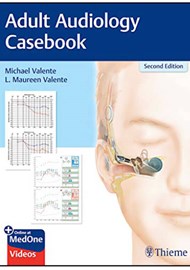Diagnostic audiology is one of my passions so, naturally, the title of this book was an attractive proposition for the clinician in me – and I wasn’t disappointed! It is seldom that you will learn so much in both the length and the breadth of the clinical science from one book alone.
There are a lot of amazing audiology books out there, which will teach you great things about a particular topic. However, the brilliant mix of many of the different audiology subspecialities here just widens up the scope of your learning in many different ways. That makes this book a special addition to any audiology setting.
Before I start reviewing the content of the book, I have to congratulate the publishers and the authors/contributors for the fantastic presentation. The book feels great in its entirety when you hold it in your hands. It reflects the considerable time that would have been spent to put it together. It is printed on a glossy and thick paper with optimum thickness; the fonts are pleasing to the eyes, and the pictures are vivid.
At 277 pages long, what feels like an audiology-thriller series is made of 50 cases put forward by 83 audiological detectives. There are a lot of useful clinical tables, coloured and monochrome pictures and graphs to go with the individual case records. Some of the most famous audiology names on the planet feature in the contributor’s list. And, of course, the Valente pair themselves have proven what great editors they are. The cases are divided into seven different topics: hearing disorders, non-organic, vestibular, amplification, cochlear implants, and tinnitus and sound intolerance disorders. So, there is something for everyone. Moreover, the organisation is such that even if you don’t subspecialise on a topic, the cases are bound to stimulate your clinical curiosity and still help in your own interest area.
I also really liked the thought process put forward to develop the methodology of the description of the cases. It is not the bog-standard case report format that you will see in, for example, a PubMed article. The organisation of cases is designed to stimulate your thinking to help you get the most out of the book. Each case has a section for ‘questions to the reader’ where the authors are giving the readers some ideas to ponder based on the introduction provided beforehand. This is followed by the author’s reflection on those discussion points, so you are not left in the dark to solve the clinical mysteries all by yourself. And best of all, each case has some key points mentioned at the end, so you can generalise the learning from the individual cases to a wider clinical population that you will encounter in your clinics. All this effort from the editors and contributors makes this book really easy yet thought-provoking reading.
Furthermore, this book seems to be one of those timeless texts that you can read at any stage of clinical life. Whether you are a student or a clinician with many years of experience, this should be a useful read for everyone. It made me think about how I organise my own clinical cases and how I can follow a better methodology to develop learning points from my cohort of clinical clients. I would be happy to give this book 4.5/5 stars. If you haven’t got it yet, you should try to get your hands on it. This material will help develop you as a professional.




